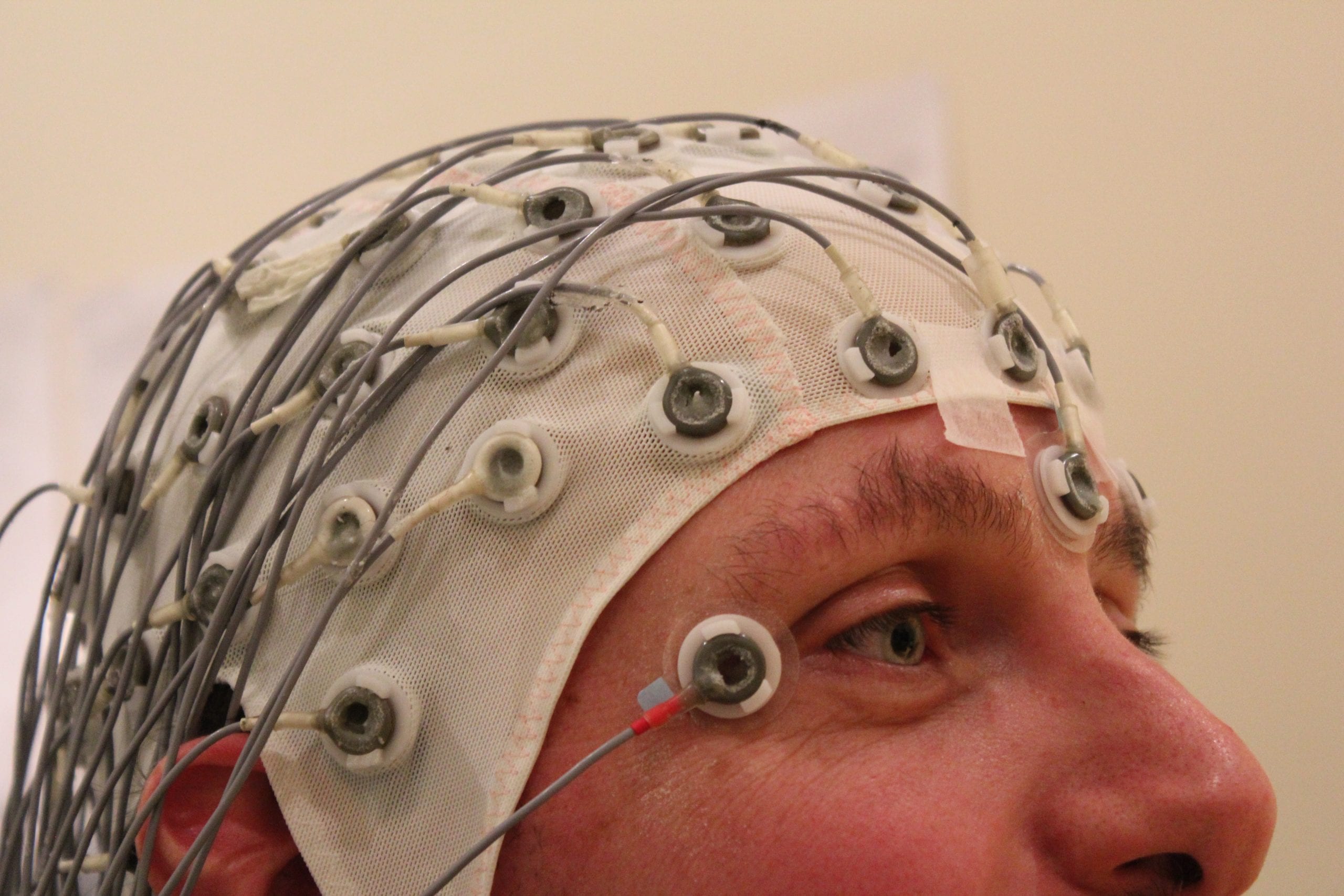Wurzburg, Germany, 1892. Hans Berger was in military training when he was suddenly thrown off his horse and injured. That same evening, Berger received a telegram from his family coincidentally inquiring about his health. This event instigated an ambition in Berger to discover the neural basis of ‘telepathy', communication of thoughts between people without the use of the primary senses. After obtaining his medical degree in 1897, Berger conducted countless hours of research on the influence of brain state and activity on psychic phenomena. Although he missed the mark with telepathy, Berger developed a ground-breaking technique to noninvasively record brain electrical activity known as electroencephalography (EEG) in 1924.

EEG Recording Cap. Image Credit: Tim Sheerman-Chase via Flickr. Licensed Under: CC BY 2.0
The EEG has since evolved to become an essential component to conduct neurosurgery, and as a diagnostic and prognostic tool for detecting imbalances in brain wave activity that may indicate abnormalities in biological behavior. EEG recordings are taken by electrodes that are placed evenly on either side of the scalp, covering the outermost layer of the brain known as the cerebral cortex. These electrodes measure electrical currents generated by cortical pyramidal neurons – cells that run perpendicularly to the cortex and transmit information to one another through electrical signals. The sum of all the voltages generated by cortical pyramidal neurons are measured, amplified, and recorded in waves by an EEG. Sleep studies have helped in defining five specific brain wave signatures, as defined by differences in frequency (hertz – hz) ranges, that vary throughout the day according to activity, focus, and emotional state.
- Gamma – 40-100 Hz: The highest in frequency. Gamma waves are implicated in highly engaged brain states, where integration of multiple sensory inputs are required for learning and memory.
- Beta – 13-39 Hz: Beta waves are prevalent in a wakeful state, associated with arousal, task-oriented focus, and decision making.
- Alpha – 9-12 Hz: Alpha waves are indicative of relaxation and pre-meditative states. The act of simply closing eyes can induce a change from beta to alpha waves.
- Theta – 4-8 Hz: Theta waves are predominant during sleep and deep meditative states. This low-level of neural firing is important for memory consolidation and emotional processing.
- Delta – 1-3.7 Hz: Delta waves occur during deep sleep and are critical for regulating autonomic functions such as deep-breathing and digestion, and in whole, providing restorative sleep.
In general, higher frequencies are associated with heightened awareness, anxiety, and critical thinking, while lower frequencies are associated with more relaxed, removed, and restorative states. Health professionals can utilize the EEG to observe imbalances in these frequencies that may indicate deficiencies in mental health or progression of neurological disorders.
Stress, anxiety, and depression have often been associated with an over-expression of beta waves. In fact, a recent study associated the abundance of beta waves in brain structures involved in mood and memory in patients with worsening mood. Increase in the theta/beta ratio has been connected to Attention Deficit Hyperactivity Disorder (ADHD) in children, correlating to the interplay between decreased attention and increased alertness. Schizophrenia has been linked to spontaneous bouts of gamma activity, resulting in memory problems, heightened awareness, and/or hallucinations. Fortunately, the EEG has also been used as a therapeutic tool for neurological conditions.

Biofeedback is a common method used for controllable illnesses, wherein, mental state is monitored with an EEG. A therapist or clinician then assists with relaxation techniques to support the patient to get back to ‘normal' brain wave patterns. Biofeedback can often be coupled with cranial electrotherapy stimulation and deep-brain stimulation, techniques that deliver varying levels of electrical current to an individual's scalp or an intracranial location (with implantation), respectively. These methods help patients to control their mental state primarily for conditions such as ADHD, OCD, traumatic brain injury, depression, anxiety, mood disorders, and sleep disorders.
Although brainwave research has a long way to go before becoming the standard-of-treatment for neurological disorders, it can still be useful to foster an enhanced quality of personal and professional life. During any stressful times, it is important to maintain balanced brain waves throughout the day for clarity, memory, and general happiness. Simply closing one's eyes and taking deep breaths are excellent forms of increasing relaxing alpha wave levels. A full night's rest can do wonders for clarity and memory recall. Writing out thoughts and talking to others reduces excessive theta wave-related internal confusion. Overall, a healthy mindset can be achieved by being conscientious of one's mental state in various situations and counterbalancing with techniques relevant to reducing or increasing neural activity – purely riding the brain wave.

Chaitanya Tondepu is a graduate student in the Integrated Life Sciences program at the University of Georgia. Other than science, her favorite pastimes are dancing, hanging out with friends and family, exploring, crafting, and eating delicious food. You can email her at chaitanya.tondepu@uga.edu. More from Chaitanya Tondepu.
About the Author
- athenssciencecafehttps://athensscienceobserver.com/author/athenssciencecafe/April 17, 2020
- athenssciencecafehttps://athensscienceobserver.com/author/athenssciencecafe/April 12, 2020
- athenssciencecafehttps://athensscienceobserver.com/author/athenssciencecafe/April 3, 2020
- athenssciencecafehttps://athensscienceobserver.com/author/athenssciencecafe/March 30, 2020







